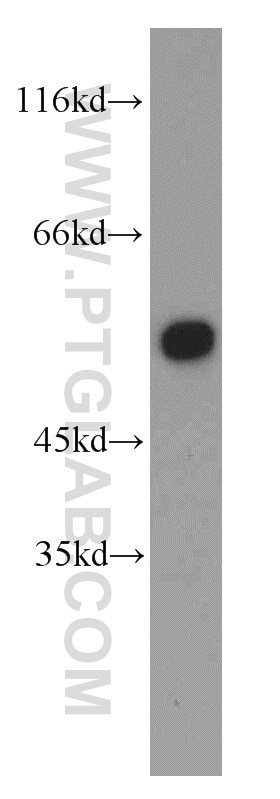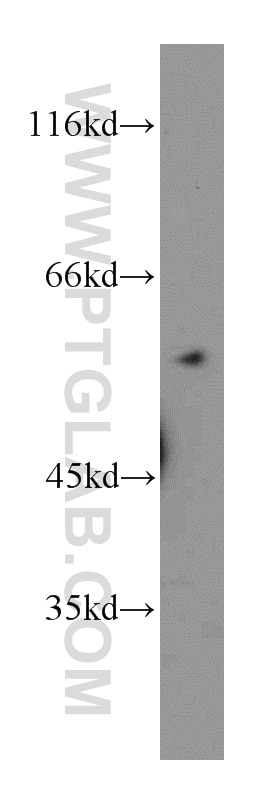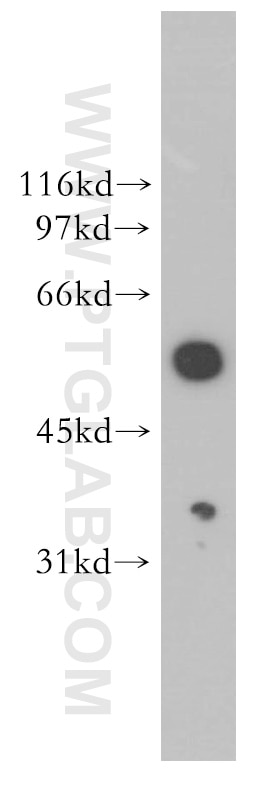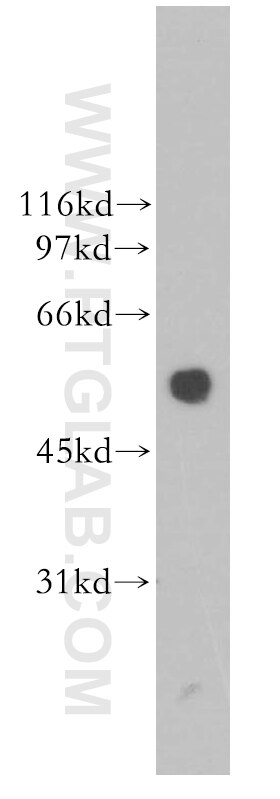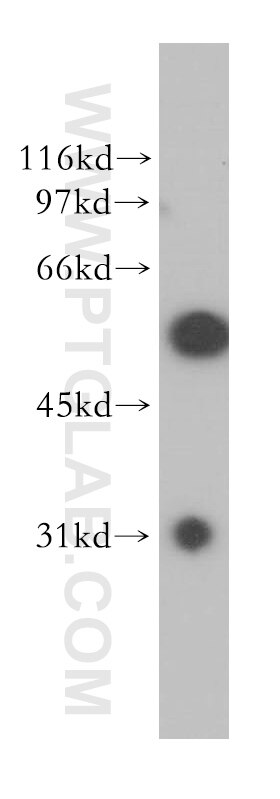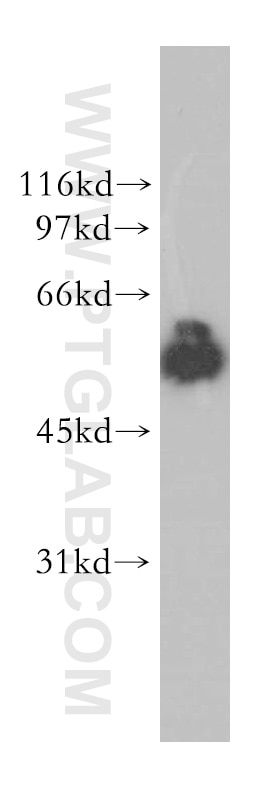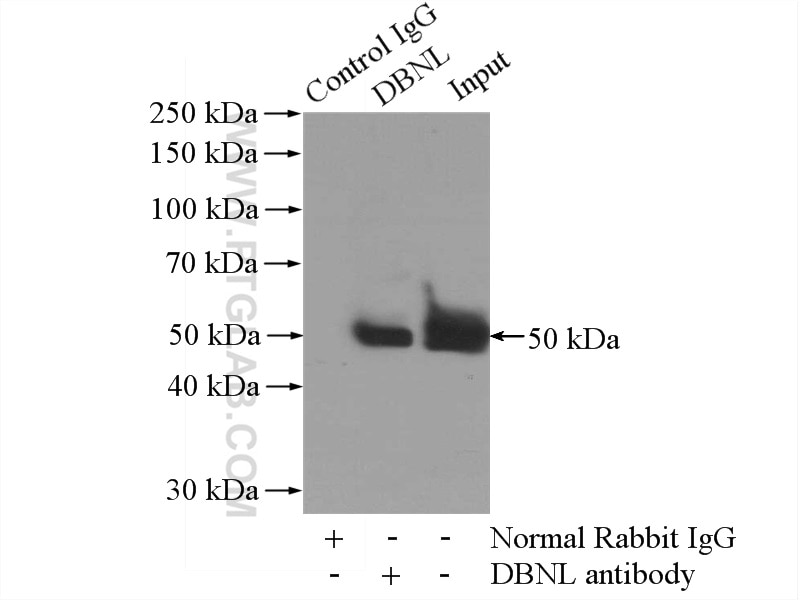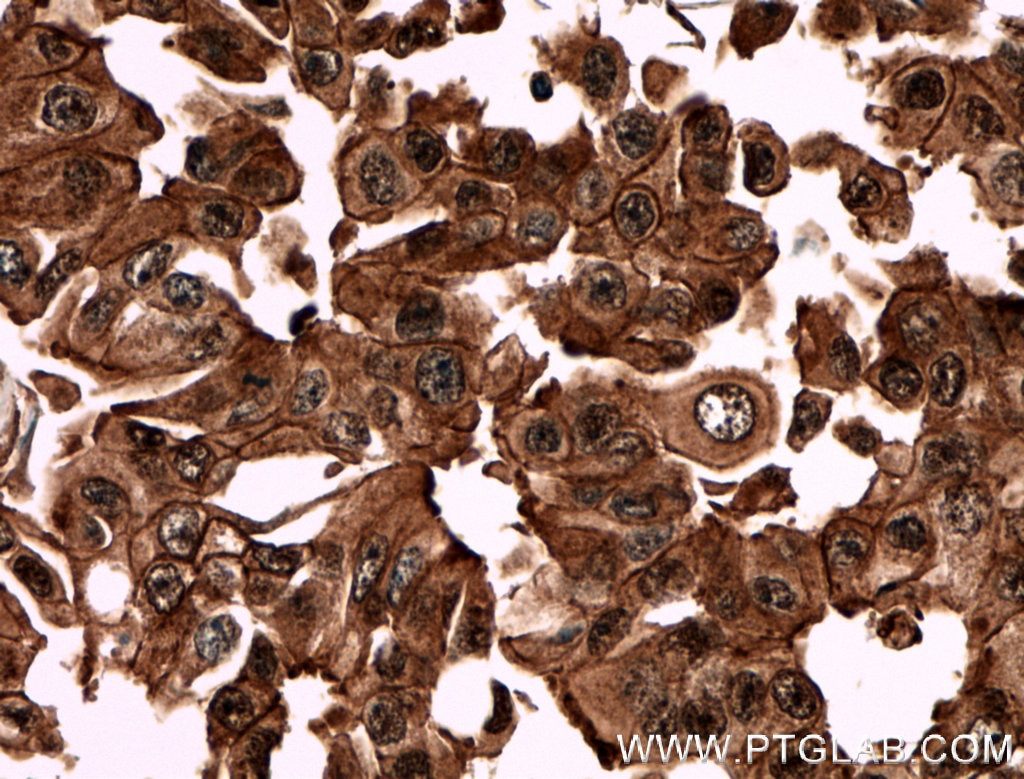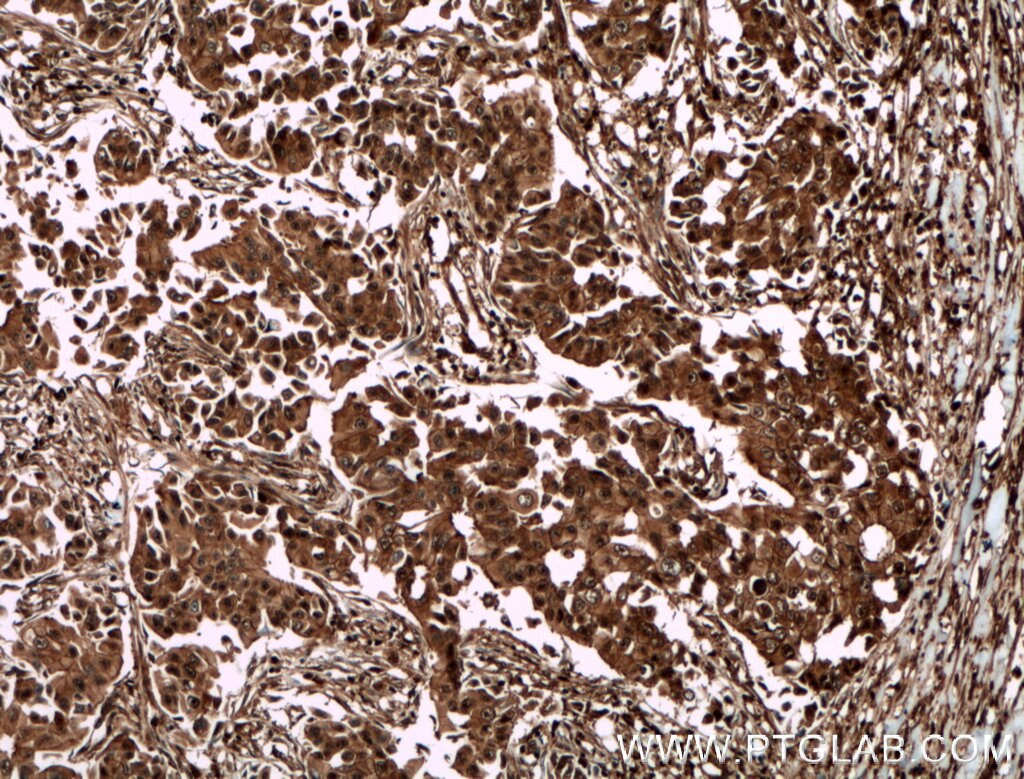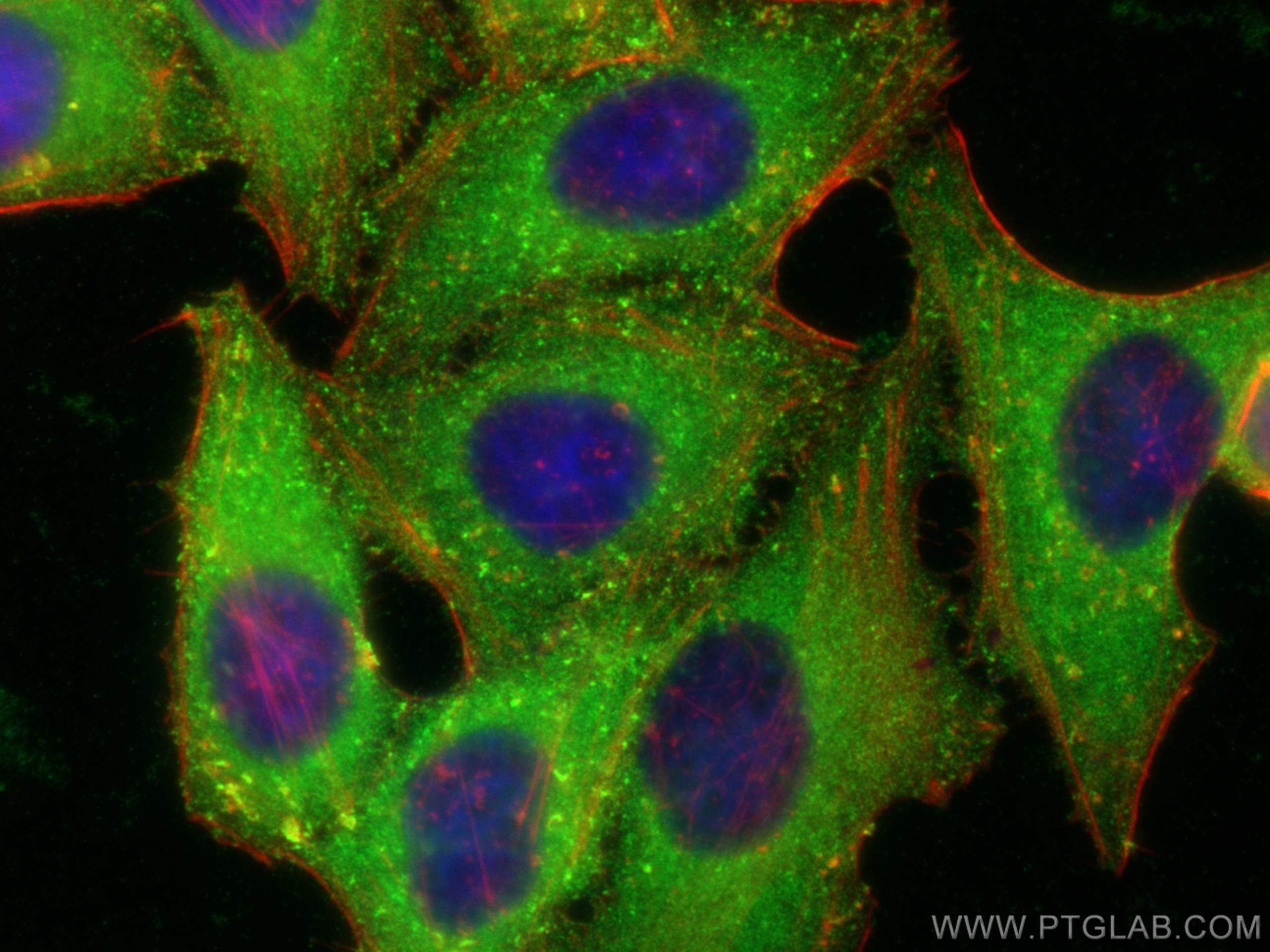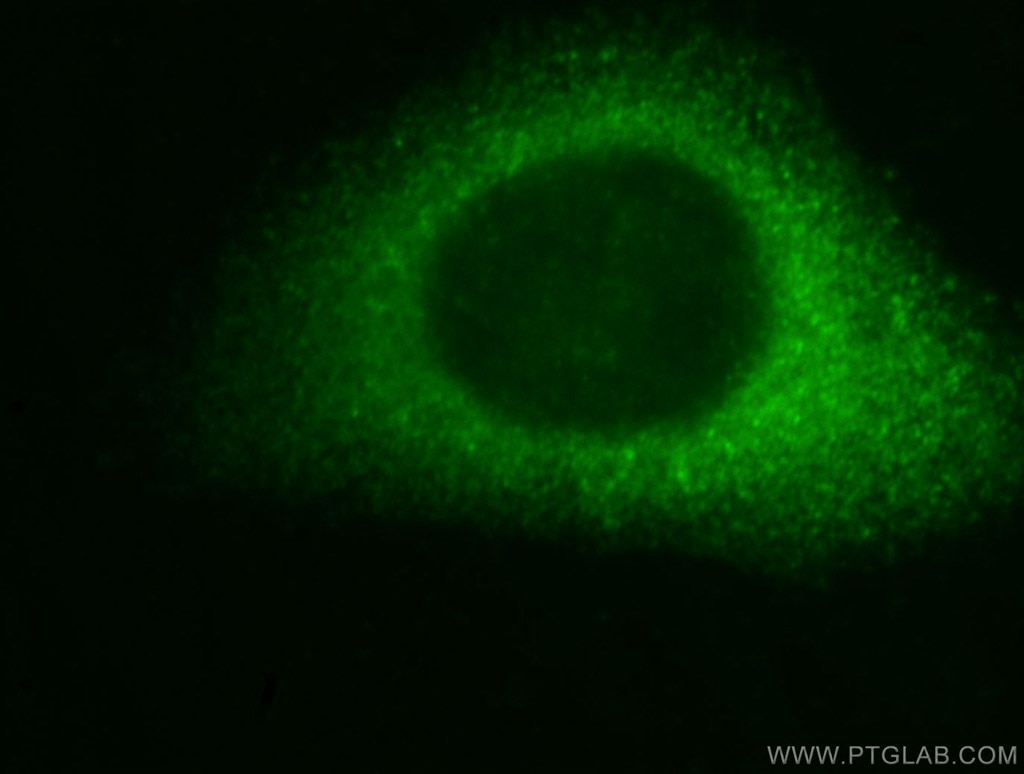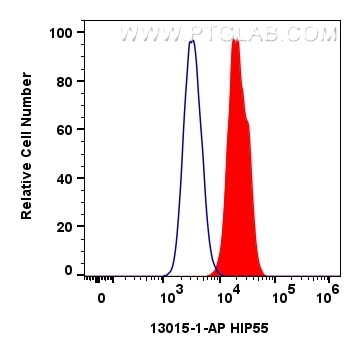- Featured Product
- KD/KO Validated
HIP55 Polyklonaler Antikörper
HIP55 Polyklonal Antikörper für WB, IHC, IF/ICC, FC (Intra), IP, ELISA
Wirt / Isotyp
Kaninchen / IgG
Getestete Reaktivität
human, Maus, Ratte
Anwendung
WB, IHC, IF/ICC, FC (Intra), IP, ELISA
Konjugation
Unkonjugiert
Kat-Nr. : 13015-1-AP
Synonyme
Geprüfte Anwendungen
| Erfolgreiche Detektion in WB | Maushirngewebe, HeLa-Zellen, humanes Herzgewebe, Jurkat-Zellen, K-562-Zellen, Mausherzgewebe |
| Erfolgreiche IP | Maushirngewebe |
| Erfolgreiche Detektion in IHC | humanes Mammakarzinomgewebe Hinweis: Antigendemaskierung mit TE-Puffer pH 9,0 empfohlen. (*) Wahlweise kann die Antigendemaskierung auch mit Citratpuffer pH 6,0 erfolgen. |
| Erfolgreiche Detektion in IF/ICC | HepG2-Zellen |
| Erfolgreiche Detektion in FC (Intra) | HepG2-Zellen |
Empfohlene Verdünnung
| Anwendung | Verdünnung |
|---|---|
| Western Blot (WB) | WB : 1:500-1:3000 |
| Immunpräzipitation (IP) | IP : 0.5-4.0 ug for 1.0-3.0 mg of total protein lysate |
| Immunhistochemie (IHC) | IHC : 1:50-1:500 |
| Immunfluoreszenz (IF)/ICC | IF/ICC : 1:200-1:800 |
| Durchflusszytometrie (FC) (INTRA) | FC (INTRA) : 0.40 ug per 10^6 cells in a 100 µl suspension |
| It is recommended that this reagent should be titrated in each testing system to obtain optimal results. | |
| Sample-dependent, check data in validation data gallery | |
Veröffentlichte Anwendungen
| KD/KO | See 1 publications below |
| WB | See 3 publications below |
| IF | See 2 publications below |
| IP | See 2 publications below |
Produktinformation
13015-1-AP bindet in WB, IHC, IF/ICC, FC (Intra), IP, ELISA HIP55 und zeigt Reaktivität mit human, Maus, Ratten
| Getestete Reaktivität | human, Maus, Ratte |
| In Publikationen genannte Reaktivität | human, Maus |
| Wirt / Isotyp | Kaninchen / IgG |
| Klonalität | Polyklonal |
| Typ | Antikörper |
| Immunogen | HIP55 fusion protein Ag4078 |
| Vollständiger Name | drebrin-like |
| Berechnetes Molekulargewicht | 430 aa, 48 kDa |
| Beobachtetes Molekulargewicht | 55 kDa |
| GenBank-Zugangsnummer | BC031687 |
| Gene symbol | HIP55 |
| Gene ID (NCBI) | 28988 |
| Konjugation | Unkonjugiert |
| Form | Liquid |
| Reinigungsmethode | Antigen-Affinitätsreinigung |
| Lagerungspuffer | PBS with 0.02% sodium azide and 50% glycerol |
| Lagerungsbedingungen | Bei -20°C lagern. Nach dem Versand ein Jahr lang stabil Aliquotieren ist bei -20oC Lagerung nicht notwendig. 20ul Größen enthalten 0,1% BSA. |
Hintergrundinformationen
HIP55, also known as DBNL, ABP1, SH3P7, belongs to the ABP1 family. HIP55 plays a role in the reorganization of the actin cytoskeleton, formation of cell projections, such as neurites, in neuron morphogenesis and synapse formation via its interaction with WASL and COBL. HIP55 acts as a key component of the immunological synapse that regulates T-cell activation by bridging TCRs and the actin cytoskeleton to gene activation and endocytic processes (PMID: 14729663). The N terminus of HIP55 contains a putative actin-binding domain found in drebrins, which are involved in brain development, and the C terminus contains an SH3 domain. Expect a band 55 kDa in size corresponding to HIP55 by western blotting.
Protokolle
| PRODUKTSPEZIFISCHE PROTOKOLLE | |
|---|---|
| WB protocol for HIP55 antibody 13015-1-AP | Protokoll herunterladen |
| IHC protocol for HIP55 antibody 13015-1-AP | Protokoll herunterladenl |
| IF protocol for HIP55 antibody 13015-1-AP | Protokoll herunterladen |
| IP protocol for HIP55 antibody 13015-1-AP | Protokoll herunterladen |
| FC protocol for HIP55 antibody 13015-1-AP | Download protocol |
| STANDARD-PROTOKOLLE | |
|---|---|
| Klicken Sie hier, um unsere Standardprotokolle anzuzeigen |
Publikationen
| Species | Application | Title |
|---|---|---|
Acta Pharmacol Sin The multifunctional adaptor protein HIP-55 couples Smad7 to accelerate TGF-β type I receptor degradation.
| ||
J Neurosci Drebrin-like (Dbnl) controls neuronal migration via regulating N-cadherin expression in the developing cerebral cortex. | ||
J Cell Sci VEGF-A stimulates podosome-mediated collagen-IV proteolysis in microvascular endothelial cells. | ||
J Microbiol Effect of Salmonella treatment on an implanted tumor (CT26) in a mouse model. | ||
